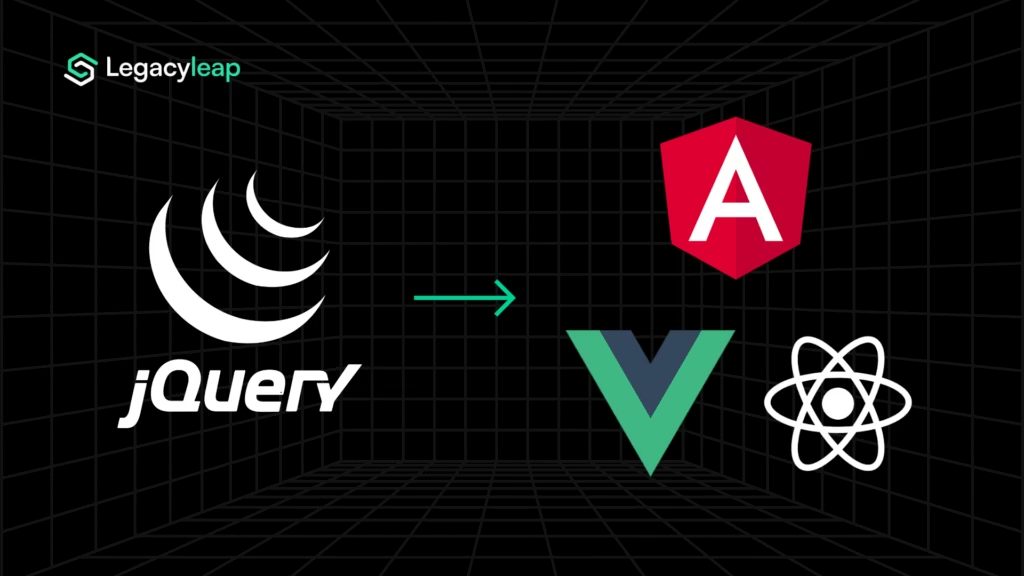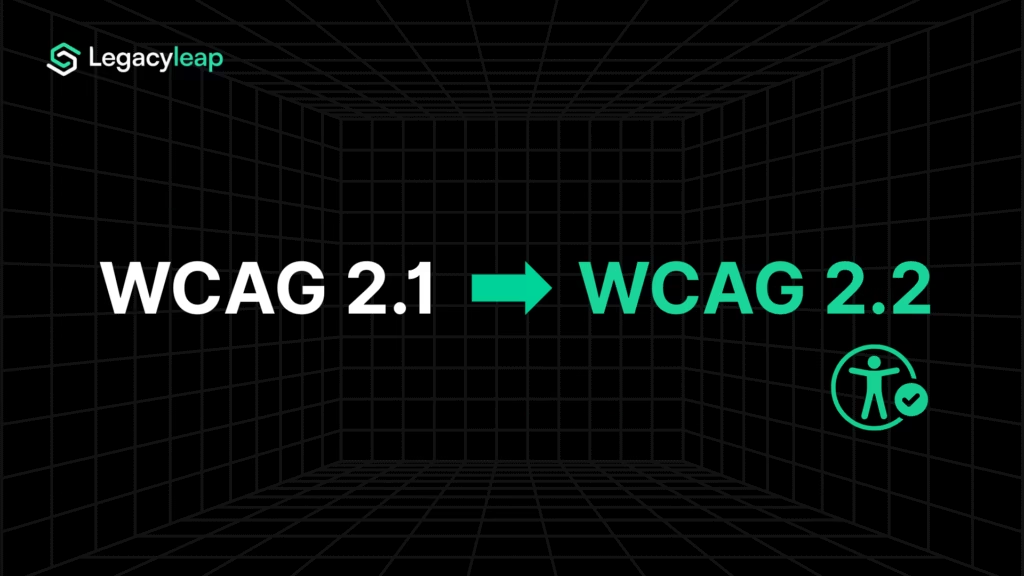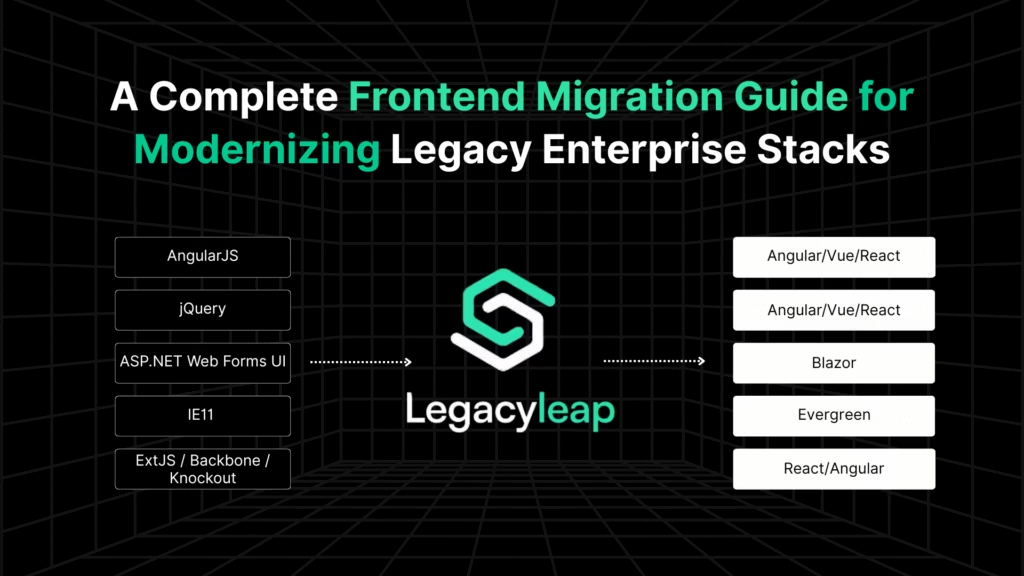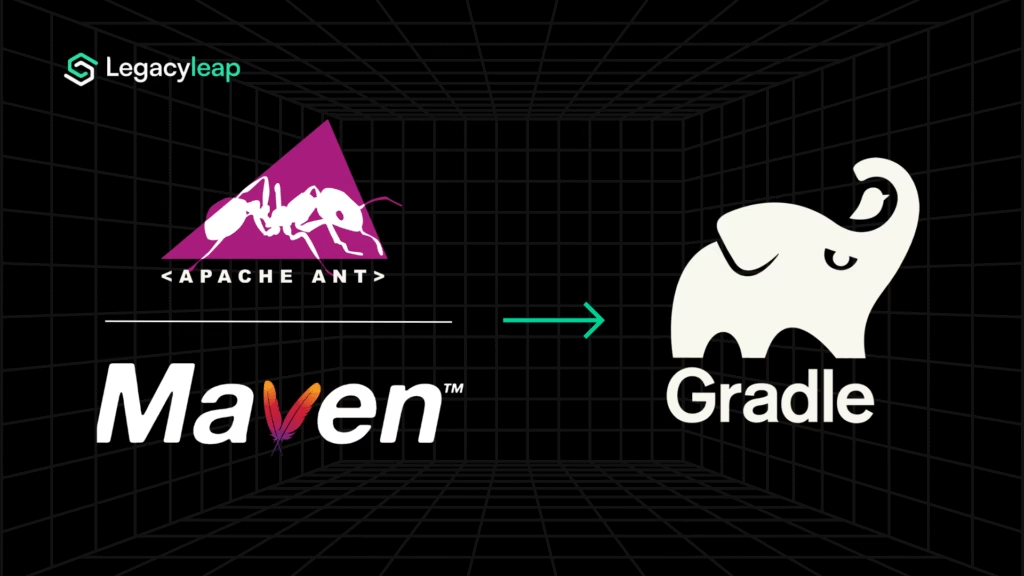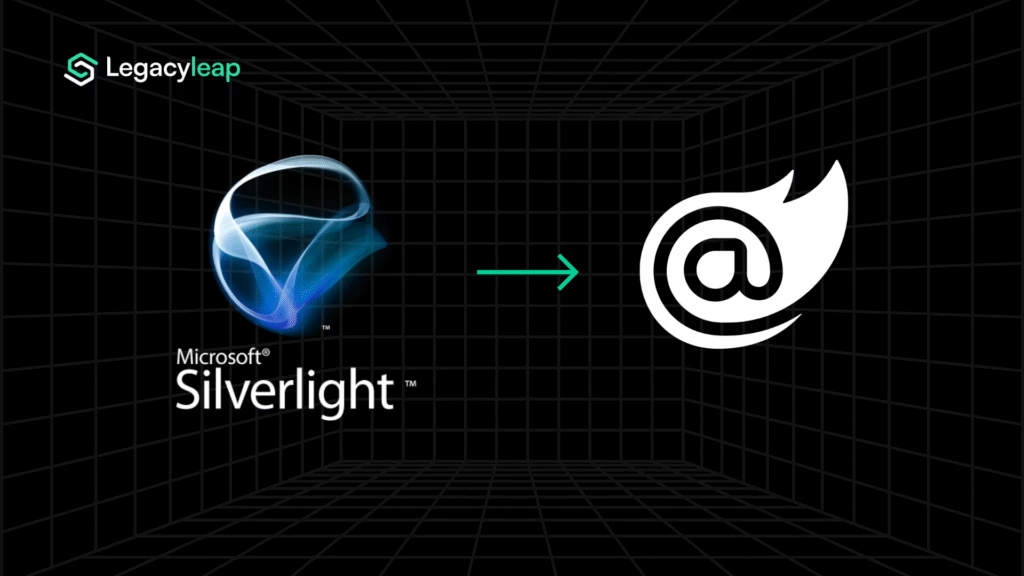Every modernization effort carries risks—downtime, data loss, and broken functionality top the list. These aren’t just technical setbacks; they shake stakeholder confidence and can stall progress. Traditional safety nets help, but they often miss the mark by relying on manual processes and static testing.
Gen AI changes the equation. It brings precision and speed, automating test creation across every layer—API, UI, and more—while ensuring the new system matches the old in function and performance. What’s more, it understands the unique context of your applications, generating tests tailored to your business logic.
The result? Confidence that your modernization efforts won’t break what matters most.
In this blog, we’ll unpack the challenges of traditional safety approaches, show how Gen AI addresses them, and detail how Legacyleap builds these AI-powered safety nets to make modernization seamless and secure.
Prefer to listen?
This episode of The Legacy2Leverage Show explores the topic in podcast form.
Why Traditional Safety Nets Fall Short in Modernization Projects
Historically, safety nets in modernization projects have relied on foundational risk management strategies and backup systems. These include planning for potential downtime or data loss and implementing reliable backup solutions to safeguard critical information.
While effective to an extent, such approaches often fall short when addressing the dynamic complexities of modern systems.
Common pitfalls include:
- Underestimated Risks: Traditional frameworks often overlook unexpected challenges, leaving organizations vulnerable during critical transitions.
- Weak contingency Plans: Insufficient preparation for failure scenarios can compound problems, turning minor setbacks into major disruptions.
- Incomplete Risk Coverage: Traditional safety nets frequently fail to account for hidden dependencies or nuanced application logic, leaving critical gaps in risk mitigation.
- Limited Verification Capabilities: Manual contingency planning and testing often overlook subtle functional discrepancies, increasing the risk of failures post-migration.
- Low Stakeholder Confidence: Without comprehensive validation systems, stakeholders remain skeptical about modernization success, slowing down buy-in and implementation.
While these methods form a baseline for risk mitigation, they lack the agility and precision needed for today’s modernization challenges. This is where new approaches, powered by Gen AI, offer a significant leap forward—building smarter, more adaptable safety nets that instill confidence and minimize disruption.
How Can We Approach Safety Nets Differently with Gen AI?
In the world of modernization, safety nets are essential, but they need to evolve to match the complexities of today’s systems.
With Gen AI, we now have a new approach to risk mitigation and validation throughout the modernization process. At Legacyleap, we leverage Gen AI to create intelligent, automated safety nets that provide unmatched confidence in system functionality during and after migration.
Let’s take a more detailed look at this.
How Gen AI Enables Proactive and Intelligent Testing Across Layers
One of the most critical aspects of any modernization effort is ensuring the new system behaves as expected, without introducing disruptions. Traditional testing methods often do not provide comprehensive coverage across all layers of an application.
That’s where Gen AI comes in. By automating the generation of test cases, we cover UI, integration, API, and functional layers seamlessly.
These automated tests don’t just replicate traditional checks; they use Behavior-Driven Development (BDD) formats, allowing both technical and business teams to clearly understand and communicate the tests. This ensures everyone, from developers to stakeholders, can quickly validate key application behaviors and expectations.
Also read: Enterprise Legacy Modernization AI Platform — see how Gen AI platforms bring business and technical teams together during legacy transformations.
The result? Faster, more precise validation without any of the confusion or inefficiencies of manual test creation.
How Gen AI Ensures Real-Time Functional Validation Between Legacy and Modern Systems
We have prioritized ensuring functional parity between legacy and modern systems. Whether migrating from EJB to Spring or JSP to ReactJS, the modernized application must behave the same way as the legacy system did.
Traditional approaches often fail to capture subtle behavioral discrepancies that may emerge post-migration. Using Gen AI, we can automate the generation of test cases that not only simulate real-world interactions but also compare the legacy and modern systems in real time.
For instance, commands like generate tests in the CLI can produce precise, executable test cases tailored to each application layer, with results directly linked to specific business functionality. These tests are designed to validate everything — from API responses to UI behavior — ensuring that the new system mirrors the legacy application’s behavior, down to the smallest detail.
Curious how your own legacy system would perform under Gen AI-driven testing? Book a quick call to see a live demo of our safety net in action.
Let’s take a closer look at how this works in practice.
When migrating a legacy EJB application to Spring, for example, Gen AI doesn’t just generate generic tests. It produces business-specific API test cases that simulate real interactions between the components, ensuring that everything behaves as expected.
For the UI migration from JSP to ReactJS, automated functional tests are generated to validate that user flows remain consistent, even as the underlying code changes. These tests are backed by the power of Java code execution, which means they run automatically without manual intervention.
If you’re planning or executing a legacy modernization, use this checklist to ensure functional parity at every stage.
Checklist: How to Validate Functional Parity During Modernization
Use this checklist to ensure your modernized system behaves exactly like your legacy one:
- Identify all business-critical workflows and legacy use cases
- Use Gen AI to auto-generate test cases across UI, API, and logic layers
- Simulate real-world user behavior across both systems
- Run parallel validations between legacy and modern environments
- Compare outputs, API responses, and UI behaviors in real time
- Document functional mismatches and regressions automatically
- Align test results with stakeholder-approved business logic
- Iterate tests as the modern system evolves during rollout
Why Gen AI Safety Nets Scale with Your Modernization Journey
Our testing framework isn’t just designed for the present—it’s built for scalability. As your modernization efforts continue and evolve, so do your testing needs. Our AI-driven safety nets are adaptable, allowing for iterative testing that can keep pace with future transformations.
This flexibility ensures that your system remains safe and reliable, no matter how your technology stack evolves.
Overview of Gen AI Testing Benefits in Legacy Modernization
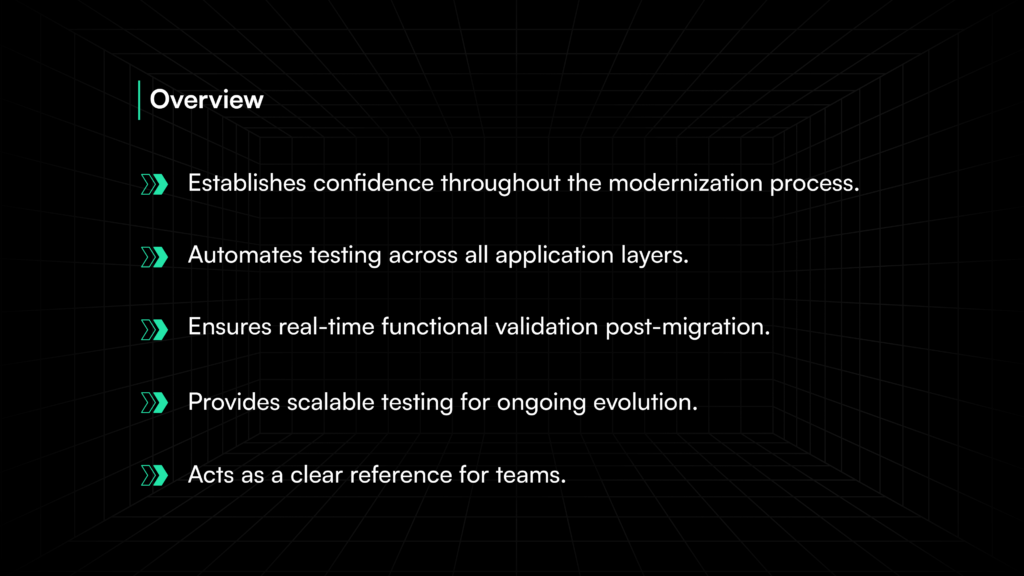
Traditional Testing vs. Gen AI Testing in Modernization
| Aspect | Traditional Testing | Gen AI Testing with Legacyleap |
| Test Case Creation | Manual and time-consuming | Auto-generated test cases across UI, API, and logic layers |
| Coverage | Partial, siloed, and inconsistent | End-to-end coverage with UI-to-logic traceability and business workflow awareness |
| Real-Time Validation | Not supported | Built-in, real-time comparisons between legacy and modern environments |
| Functional Parity Assurance | Manual and error-prone | Automated parity checks with output diffing and regression detection |
| Business Logic Awareness | Often overlooked or manually mapped | Aligned with stakeholder-defined workflows and use cases through Gen AI–generated summaries |
| Speed and Efficiency | Slower, linear validation cycles | Fast, adaptive, and scalable test generation across evolving systems |
| Stakeholder Confidence | Limited visibility and subjective validation | High confidence via traceable, test-backed functional parity reports |
How Gen AI Safety Nets Help Overcome Stakeholder Skepticism During Modernization
When it comes to modernization, one of the most significant hurdles is overcoming stakeholder skepticism, especially when transitioning from legacy systems to modern technologies.
Stakeholders often worry about whether the new system will perform at the same level as the old one—whether it’s due to fears of data inconsistencies, downtime, or functionality issues. At Legacyleap, we tackle these concerns head-on with purpose-built Gen AI use cases, providing data-driven assurances that the new system will perform as expected without compromising functionality.
Take, for example, one of our clients who was uncertain about migrating from EJB to Spring. Their primary stakeholder was excited about the potential cost savings but skeptical about the feasibility of maintaining functional parity without a deep understanding of the underlying business logic.
To resolve this, we generated detailed API and functional test cases that compared the two systems’ behaviors side-by-side. This provided a concrete, data-driven assurance that the Spring application would deliver the same outcomes as the legacy EJB system, directly mapping the business logic of both systems.
Apart from the obvious testing, this approach directly addressed the underlying skepticism. Stakeholders could see, through tangible test results, that the new system was performing as the old one did. This instills confidence and demonstrates that the modernized system will meet all functional requirements.
Real-time validation is important to drastically reduce risks, ensure faster deployments, and create a seamless modernization process. AI-driven safety nets, therefore, not only mitigate technical risks but also ease the minds of stakeholders, allowing for a smoother and more confident transition to modern systems.
How Legacyleap Uses Multi-Layered Testing to Ensure Modernization Safety
We know that a single layer of testing isn’t enough to ensure the safety and success of modernization efforts. To safeguard against potential issues at every stage, we’ve implemented a multi-layered testing approach that comprehensively validates the entire system across different levels.
Each layer works in parallel to ensure the integrity of the system throughout the transformation process, providing robust validation and minimizing risks. This approach guarantees that the new system functions as expected, without compromising performance or reliability.
- Unit Tests: These are automatically generated and continuously fine-tuned to provide quick feedback during the modernization process. The goal is to identify potential issues early, ensuring that the foundation of the new system remains intact.
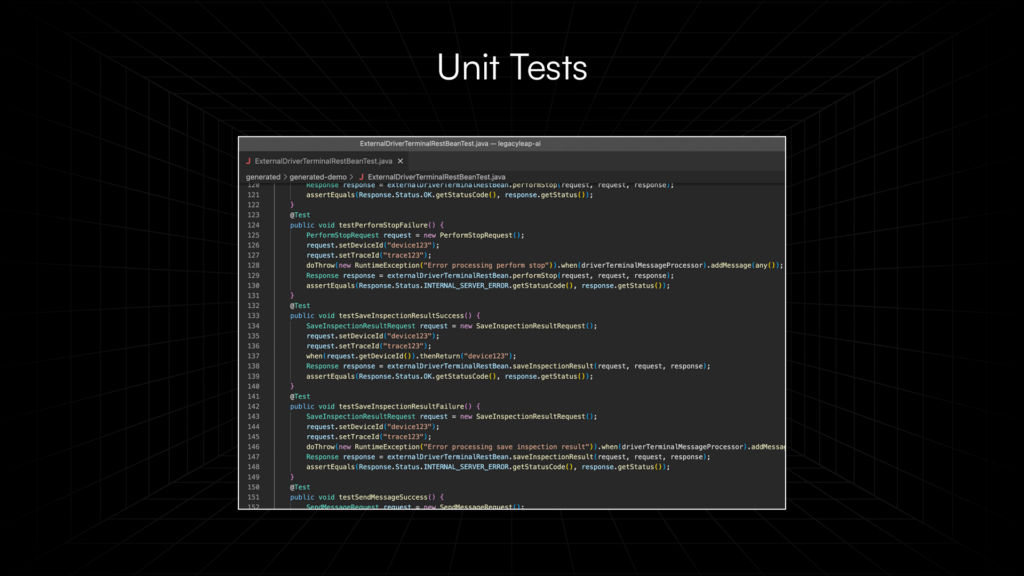
- API Tests: Focused on business-critical workflows, these tests ensure that essential functions continue to work as expected even as the underlying system architecture changes. They provide confidence that the business logic is preserved across both legacy and modern systems.
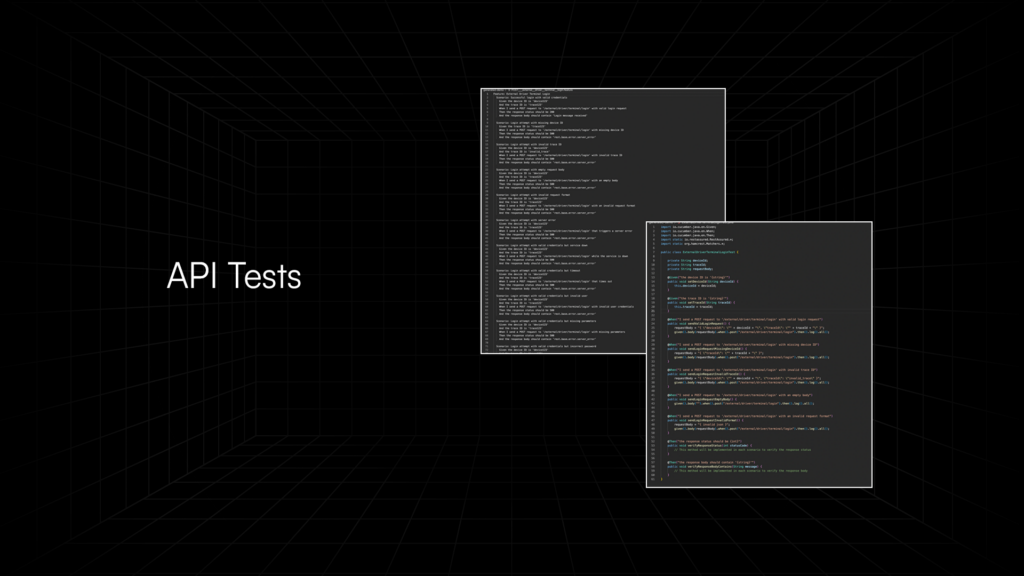
- Functional and UI Tests: These tests validate user-facing elements, particularly when technology transitions happen (e.g., migrating from JSP to ReactJS). Tools like Selenium ensure that the user experience remains consistent, regardless of the changes under the hood.
Also read: Application Modernization Roadmap — explore how functional safety ties into long-term modernization planning.
How Gen AI Safety Nets Build Confidence in the Modernization Process
Modernization doesn’t have to be risky. With the right safety nets in place, you can move forward with confidence, knowing that your systems will function seamlessly, no matter the changes.
At Legacyleap, we don’t just talk about safety—we build it into every layer of the process with Gen AI.
By automating testing and validating functionality across every part of your system, we make sure nothing breaks in the transition. The idea is the same everywhere – no matter what you’re modernizing, the functionality remains the same, all while minimizing disruption and maximizing efficiency.
This gives your stakeholders the assurance they need, so they can fully embrace modernization without the fear of unexpected setbacks.
Curious about how Gen AI makes this possible across the entire modernization process? Here’s a detailed article covering this: How Can Gen AI Drive Every Step of Your Modernization Journey?
Want to see how Legacyleap can support your modernization journey? Visit our website for more details.
FAQs
If parity gaps are detected, Legacyleap’s safety nets flag them automatically, whether it’s API mismatches, UI regressions, or business logic deviations. These issues are traceable to exact code blocks, enabling fast rollback, adjustment, or iterative fixes without halting the overall project. The result: zero guesswork, minimal disruption.
Not entirely, but it drastically reduces the manual effort required. Gen AI generates comprehensive test cases across UI, logic, and integration layers, while engineers remain in control for edge case validation and business-critical flows. The goal isn’t to remove humans but to focus their effort where it matters most.
Legacyleap’s Gen AI platform runs in fully secure environments, with support for audit logs, compliance tagging, and human-in-the-loop validation. Functional parity checks are grounded in explainable outputs, not black-box model predictions, ensuring safe modernization even under HIPAA, SOC 2, or PCI compliance constraints.
Legacyleap generates test cases across UI, API, and logic layers, with outputs that can be adapted into standard formats like Swagger specs and API tests. These artifacts are designed to integrate into enterprise QA and CI/CD pipelines, though customization may be required depending on the tools in use.
Most safety nets are built into Legacyleap’s platform and activate automatically as part of the modernization. Setup usually takes 1–3 days depending on the codebase size and environment readiness. Once configured, test generation, validation, and simulation happen continuously throughout the transformation lifecycle.


